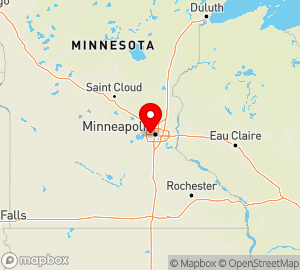Pennsylvania
Pennsylvania State Information

www.state.pa.us
Area (sq mi):: 46055.24 (land 44816.61; water 1238.63) Population per square mile: 277.30
Population 2005: 12,429,616 State rank: 0 Population change: 2000-20005 1.20%; 1990-2000 3.40% Population 2000: 12,281,054 (White 84.10%; Black or African American 10.00%; Hispanic or Latino 3.20%; Asian 1.80%; Other 2.80%). Foreign born: 4.10%. Median age: 38.00
Income 2000: per capita $20,880; median household $40,106; Population below poverty level: 11.00% Personal per capita income (2000-2003): $29,695-$31,911
Unemployment (2004): 5.40% Unemployment change (from 2000): 1.20% Median travel time to work: 25.20 minutes Working outside county of residence: 27.60%
List of Pennsylvania counties:
Pennsylvania Parks
- US National Parks
- Urban Parks
- State Parks
- Parks and Conservation-Related Organizations - US
- National Wildlife Refuges
- National Trails
- National Scenic Byways
- National Heritage Areas
- National Forests
Pennsylvania
Second state; adopted the U.S. Constitution on December 12, 1787
State capital: Harrisburg Nicknames: Keystone State; Quaker State State motto: Virtue, Liberty, and Independence State animal: White-tailed deer (Odocoileus virginianus) State beverage: Milk State dog: Great Dane State fish: Brook trout (Salvelinus fontinalis) State flagship: U.S. Brig Niagara State flower: Mountain laurel (Kalmia latifolia) State fossil: Phacops rana State game bird: Ruffed grouse or partridge (Bonasa umbel
lus)
State insect: Firefly (Poturis pennsylvanica)
State plant: Penngift crownvetch (Coronilla varia)
State song: “Pennsylvania”
State tree: Eastern hemlock (Tsuga canadensis)
More about state symbols at:
www.phmc.state.pa.us/bah/pahist/
SOURCES:
AmerBkDays-2000, p. 827 AnnivHol-2000, p. 207
STATE OFFICES:
State web site: www.state.pa.us
Office of the Governor 225 Main Capitol Bldg Harrisburg, PA 17120 717-787-2500 fax: 717-772-8284 www.governor.state.pa.us
Secretary of the Commonwealth 302 North Office Bldg Harrisburg, PA 17120 717-787-6458 fax: 717-787-1734 www.dos.state.pa.us
Pennsylvania Commonwealth Libraries 333 Market St Harrisburg, PA 17126 717-787-2646 fax: 717-772-3265 www.statelibrary.state.pa.us
Legal Holidays:
| Day after Thanksgiving | Nov 25, 2011; Nov 23, 2012; Nov 29, 2013; Nov 28, 2014; Nov 27, 2015; Nov 25, 2016; Nov 24, 2017; Nov 23, 2018; Nov 29, 2019; Nov 27, 2020; Nov 26, 2021; Nov 25, 2022; Nov 24, 2023 |
Pennsylvania
a state in the northeastern USA. Area, 117,400 sq km; population, 12 million, of which 71.5 percent is urban (1973). The capital is Harrisburg; the largest cities and industrial centers are Pittsburgh and Philadelphia, which is the second-largest seaport of the USA in cargo turnover (90 million tons in 1970).
A large part of Pennsylvania is occupied by the Appalachian Mountains (elevations to 979 m). In the west, the steep Allegheny Front separates the Appalachians from the Appalachian Plateau, which is deeply cut by river valleys. The Atlantic lowland is in the southeastern part of the state. The climate is humid and temperate. The average temperature in January is – 3°–2”C, and in July 21°-25°C. The annual precipitation is about 1,000 mm. The Ohio, Susquehanna, and Delaware rivers are navigable.
Pennsylvania is one of the most economically developed states. It ranks third in population and in the number of employed and fifth in output value of processing industries. Heavy industry predominates. Pennsylvania is the USA’s leading producer of pig iron (18 million tons in 1971), steel, coke (17 million tons in 1970), and cement (7.3 million tons in 1969) and ranks third in coal mining (82 million tons in 1970). There is some extraction of oil, natural gas, and iron ore. The installed capacity of power plants totals 24 million gigawatts (1973). The chief metallurgical centers are Pittsburgh, Bethlehem, and Fairless Hills (near Philadelphia). Developed industries include metal-working, machine building, chiefly equipment manufacturing, shipbuilding (Philadelphia), and reactor construction. Also important is the electrotechnical and radio-electronics industry. Other industries include oil refining (Philadelphia) and the production of chemicals, clay and glass products, textiles, and clothing, including knitwear. In 1971 there were 1.4 million persons (about 33 percent of the working population) employed in processing industries and 38,000 in the mining industry; less than 2 percent were employed in agriculture (1970). The number of farms declined from 129,000 in 1954 to 63,000 in 1969. Livestock raising (primarily dairy farming) and poultry breeding yield more than three-fourths of commercial agricultural output. Truck farming, horticulture, and mushroom cultivation are also developed. The number of livestock (1972) totaled 1.8 million head of cattle (including 700,000 milch cows), 700,000 hogs, and 150,000 sheep and goats.
In the first half of the 17th century, what is now Pennsylvania was the object of a conflict between the English, Dutch, and Swedes. In the 1660’s the territory was seized by the English, who founded a colony there in the 1680’s. In the 1760’s and 1770’s the English colonizers waged destructive wars against the indigenous Indian population.
Pennsylvania is one of the 13 original states of the USA. In 1776, during the War of Independence in North America (1775–83), the establishment of the USA was proclaimed in Philadelphia. During the Civil War (1861–65), Pennsylvania fought on the side of the North.